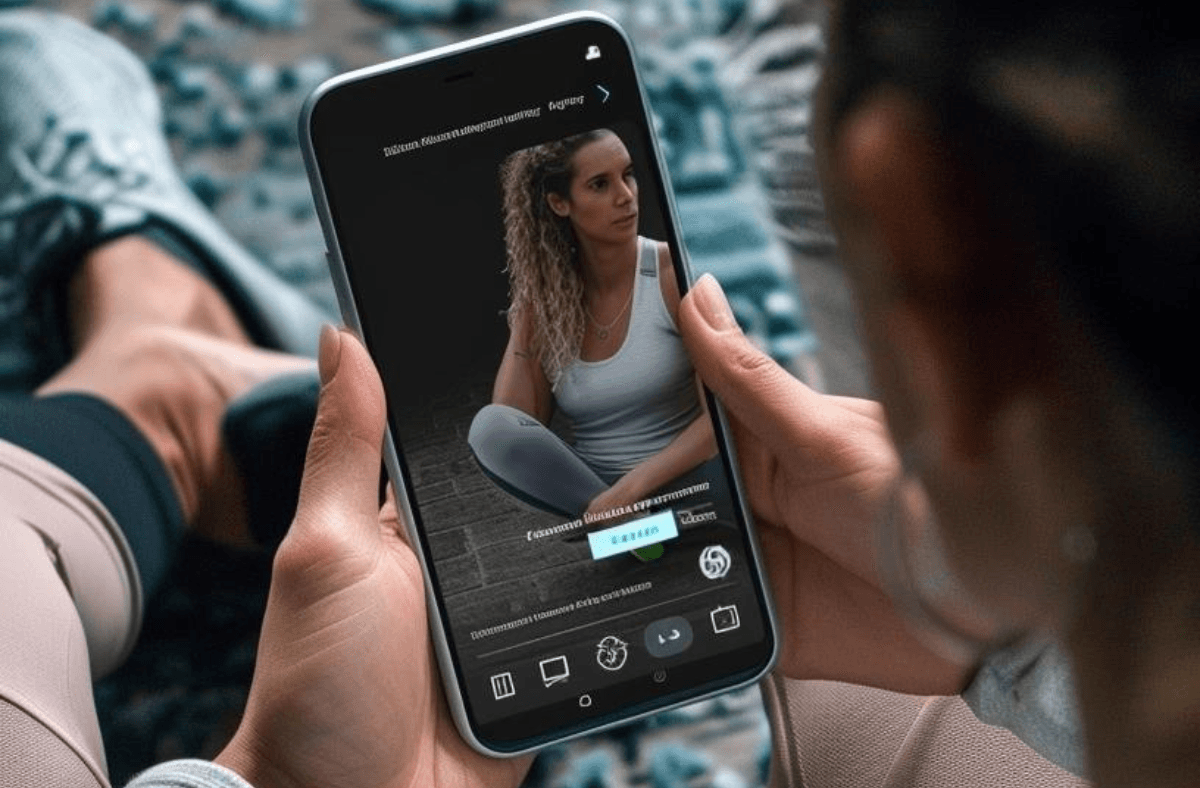Why do users abandon fitness apps?
19 Mar 2024
71% of users abandon their apps in the third month, with only 40% using them beyond the first 24 hours (Midjourney)
Many users maintain a love-hate relationship with their fitness apps. While the global number of app downloads is increasing, 71% of users abandon their apps in the third month, with only 40% using them beyond the first 24 hours. What are the reasons for this, and what can app providers do to keep their users engaged?
It seems that fitness apps aim to eliminate any excuses users have for skipping the gym. They allow us to work out anywhere, complete quick 7-minute workouts, or use AI as an affordable personal trainer. So why do users quit after a few weeks or not start their training program after the initial download and setup? Let’s take a look at the reasons.
1) Lack of motivation
Research indicates that users primarily download and set up fitness apps to maintain or improve physical fitness levels, lose/maintain weight, and enhance their quality of life.
Many users are drawn to new apps with the expectation that they will be a silver bullet, transforming their bodies within days or weeks. However, these expectations are unrealistic, as tangible results require months of regular physical activity or diet. When immediate changes don’t happen, users lose motivation and interest. Many of them express they would need "something that would encourage them to continue exercising and following milestones without a break" or "something to help them enjoy the activity itself" rather than setting artificial and unrealistic goals.
What could help here is more personalisation based on the user’s data, lifestyle, and approach. To many, personalisation today is a must – and can be achieved with AI mechanisms that generate training programmes tailored to individual needs. You can read more about AI in fitness apps in this article.
Another solution might be breaking the workout monotony and repeating the same routine in a row (which is why 16% of users abandon fitness apps). Diversifying training and tailoring it to users’ abilities and changing goals is essential, as is challenging users by exploring different workouts and suggesting new activities can help.
2) Cumbersome and manual processes
Some users find signing up and filling out profiles so strenuous that they delete the app. Lengthy and complicated onboarding forms and excessive data about the user's health can leave a bad first impression.
Those who make it through a set-up sometimes must deal with further obstacles. Some fitness apps require users to log their activities and calorie intake and don’t allow for automation in this field, which tires users who lose interest in filling in the data day after day.
On the other hand, others use innovative approaches – for example, users take a picture of a meal, and the app identifies the food, giving a calorie breakdown. Also, streamlined data collection through wearable devices can help track physical activity and save users the burden of manual input.
3) Poor User Experience (UX)
Despite the expectation of impeccable user experiences, many fitness apps still have significant room for improvement in their interfaces. Issues often stem from illogical navigation or the app not being perceived as "fun" or "easy to use," as highlighted in user reports. Participants in this study mentioned feeling overwhelmed with too many elements to track.
Certain apps function seamlessly on phones but struggle on wearable devices, while others lack optimisation for various operating systems – such as Android or iPhone. These issues result in frustrating bugs and an overall diminished user experience. Efforts should be made to enhance interface design and address functionality inconsistencies across devices and operating systems.
4) Excessive alerts and notifications
Intrusive and scolding notifications are universally disliked, leading to annoyance and quick app deletions. Fitness app providers should exercise caution in using notifications, ensuring they are necessary and relevant to avoid user frustration.
A quality notification offers pertinent information, ideally personalised to the user. It should also be visually appealing, with users having the flexibility to configure the frequency and type of notifications they prefer.
Understanding individual user behaviours allows for the development of an effective notification scheme. This can involve incorporating humour or a subtle guilt approach to engage users effectively. Striking the right balance in notification strategy contributes significantly to user satisfaction and app retention.
5) Drained battery
Lastly, users report that certain fitness apps demand excessive energy, particularly when using GPS. Engaging in longer outdoor workouts often necessitates a fully charged battery, as failure to do so may result in losing half of the training data. Additionally, apps incorporating streaming videos can rapidly deplete the battery, leading to user dissatisfaction.
Efforts to optimise energy consumption in these apps, especially during GPS usage and video streaming, are crucial for enhancing user experience and preventing frustration caused by premature battery depletion.
Important: What users say and what they do…
Fitness apps often fall victim to the “law of attrition” – the tendency for users to abandon digital solutions before achieving their goals. This is particularly damaging for apps designed to drive behavioural change and play a role in positively impacting users’ health and well-being. It’s not easy to come up with a clever strategy to navigate those challenges, especially because it’s not enough just to listen to users.
As we have described in this article on ethnographic research, what users say and what they do are two different things. Some may express enthusiasm for a feature or a product idea, but when it comes to integrating it into their daily routines, things play out quite differently. The key here is to watch them closely and conduct thorough user research to make an app successful. If you’re interested in reading more on this topic, take a look at this article .



